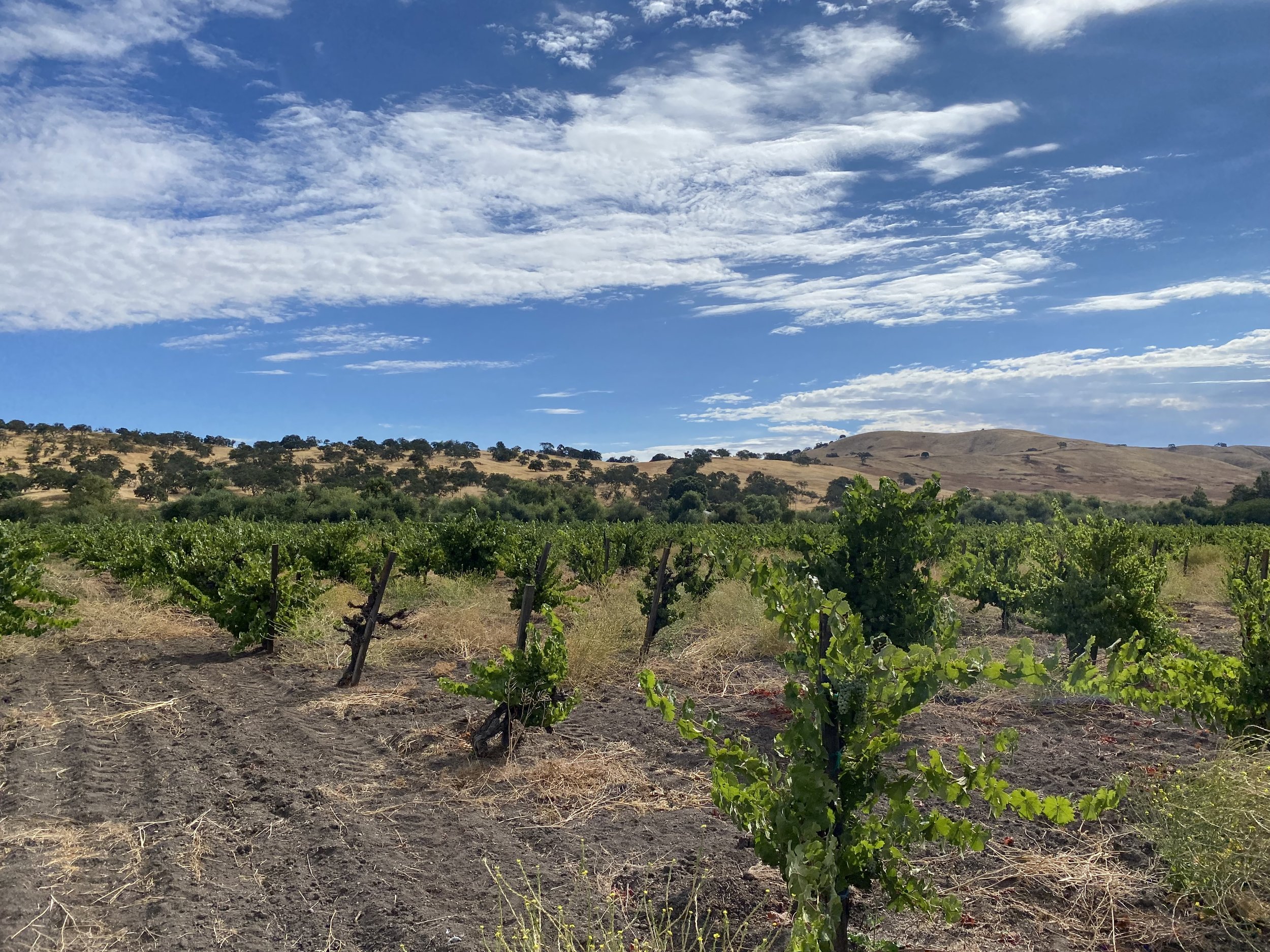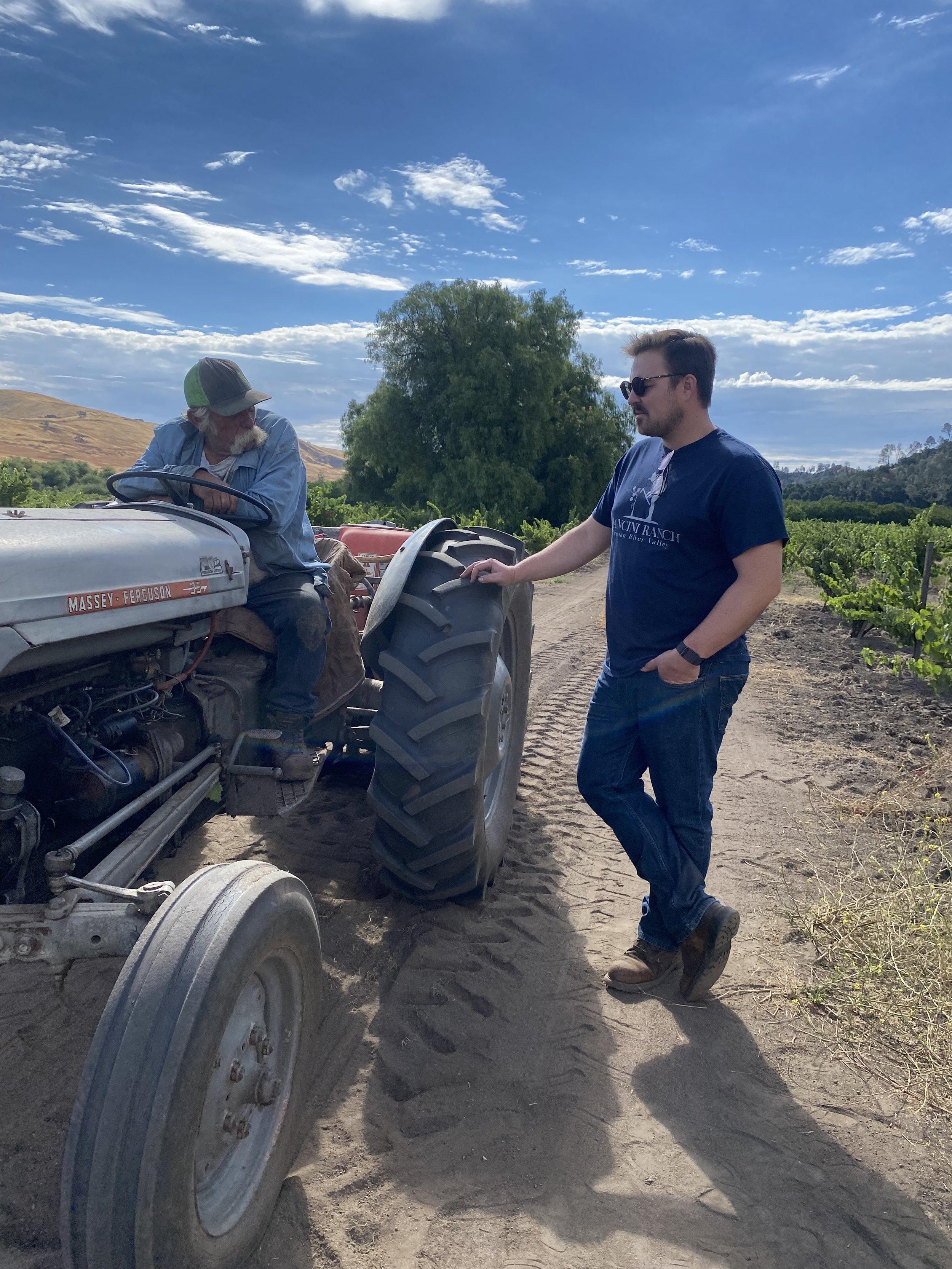Wirz Vineyard
Vineyard Age: Planted in 1964
Rootstock: own-rooted
Soil Type: Decomposed Granite over Limestone
Aspect: gentle northern slope
Farmer: Pat Wirz
Elevation: 1050-1100ft
In the 1850s Pat’s mother’s family were Texas cattle ranchers who came to California looking for gold. Though they didn’t find any, they were able to build a large ranch in the Cienega and continue ranching there. In 1915 Pat’s paternal grandfather came over from Switzerland; a dairyman who founded a creamery in Hollister. After serving in the war, in 1947, Pat’s father bought most of what is now the family ranch up in Cienega which had a few acres of old vine Zinfandel, Cabernet Pfeffer, and a Zinfandel Mataro Blend. Pat’s Grandfather besides working with dairy had worked in vineyards in the old country and help Pat’s father work the vines. Over the years their family has become quite the institution, selling seed, raising cattle, as teachers, as Doctors and working for the waterboard. Pat’s father helped plant a parcel adjoining theirs in 1964 to Riesling for Almaden Winery. Almaden was a huge, historic wine brand of the pre and post prohibition era that was sold off to Heublein in the late 70s. Their winery in the Cienega Valley 3 miles away from the Riesling parcel was in the Guinness Book of World Records for being the largest barrel storehouse in the world at one point. Pat worked nights in the cellar and days with his father maintain their extensive ranch. In the 1983 even as favor for Riesling waned, Pat’s father purchased the Riesling parcel. In 1992 Pat took over farming from his dad. The road ahead was rocky, but Pat was persistent. When a contract fell through with a large outfit that resulted in zero tons sold from 40 acres (i.e., the fruit was not accepted by the single buyer), he realized he had to diversify. Pat now sells to nearly a dozen winemakers all over the state. Though this is considerably more work for Pat, he knows he can sell the whole ranch every year. We are lucky enough to be one of the winemakers working with him.
The vineyard is unique in that it is one of the largest plantings of old-vine Riesling in the state. The vines are own-rooted – meaning they are Riesling from root to berry, not grafted onto an American rootstock. This is said to give a purer sense of the varietal character, but riskier in terms of phylloxera and nematodes. The soils at Wirz are quite interesting as well, the composition is granite over limestone. The basic limestone subsoils give the wine a taut acidity and the granite is about as California as it gets. The vines are head-trained with dozens of fruiting positions. This means that clusters are often tiny. This plus the cool conditions lead to a rather phenolic/tannic juice, but with great concentration. The vineyard can often harbor Botrytis, which contributes to the candy colors in some of the photos of the fruit, adding depth and complexity to the wine.




